The first remarkable close-up pictures of animals in the womb
The first remarkable close-up pictures of animals in the womb
http://www.dailymail.co.uk/pages/live/articles/news/news.html?in_article_id=417909&in_page_id=1770
An unborn elephant, tiny but perfect in every way. A dolphin swimming in the womb, just as it will have to swim in the ocean the moment it is born. An unborn dog panting.
Each one amazing and now, thanks to these remarkable pictures, they can be seen for the first time.
Using an array of technology, the images reveal what until now has been a secret - exactly how animals develop in the womb. They were created by the same team who in 2004 showed how human embryos "walk in the womb".
Using a combination of three-dimensional ultrasound scans, computer graphics and tiny cameras, the team were able to show the entire process from conception to birth.
"These kind of images from inside animals have never been seen before," said Jeremy Dear of Pioneer Productions, who made the film.
"We worked with dozens of zoos and animal sanctuaries across the world. There were a lot of different challenges - recording a dolphin is very different from an elephant, for instance.
"Animals were trained to sit still near the scanners and we also inserted cameras into the womb via the elephant's rectum-But it has been worth it. It one sequence we follow an elephant developing. When it is finally born, there is not a dry eye in the house.
"The images in the film are a testament to the ingenuity and patience of the production team led by Yavar Abbas and Dr David Barlow, who worked with some of the world's leading vets to obtain these pictures."
The images were created for the programme Animals In The Womb, a two-hour show to be broadcast on the National Geographic Channel in America next month and on Channel 4 and the National Geographic Channel in the UK next year.
Researchers used scans to track elephant calves developing for almost two years in the womb - the longest gestation period of all mammals.
It shows at 16 weeks the elephant foetus starting to look more like an elephant as the trunk develops.
At almost a year, the trunk is longer than the legs, and by 14 months, the characteristic elephant ears are visible. They will eventually grow to almost two feet across to help regulate the body temperature of the fullymature-elephant. At birth, he will weigh nearly 260lb and be able to take his first steps in minutes.
Animals closer to home were also studied. A golden retriever foetus is shown exhibiting some of the same behaviour as family pets, panting with its tongue out, while still in the womb.
Programme makers also reveal the moment at eight weeks when a baby dolphin learns to swim while in the womb. During the next few weeks, it develops flippers, a tail and a blowhole before being born after a year, and must be able to quickly swim to the surface to take its first breath of air.
Experts also found that at 24 days, the dolphin embryo develops tiny leg-like buds, which then disappear over the next two weeks.
After 11 weeks, the dolphin embryo's fins display bone structures resembling human hands, which experts believe may show that dolphin ancestors were land dwellers.
The footage also shows how many animal embryos are like human ones.
"The incredible thing about the early images is how we all look very similar - it is obviously we humans share a common mammalian ancestry very early in life," said Mr Dear.
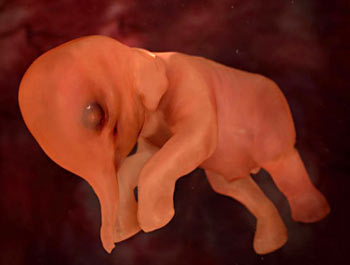
Never seen before: this remarkable image of an unborn elephant, taken approximately six months into the two-year gestation period, was captured using a combination of 3D ultrasound scans and tiny cameras inserted into the mother's womb. They were taken for the National Geographic TV channel, to be shown next year.

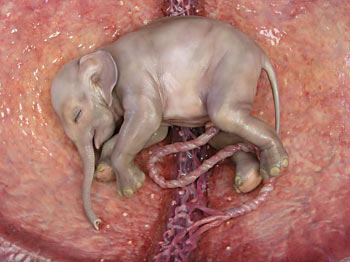
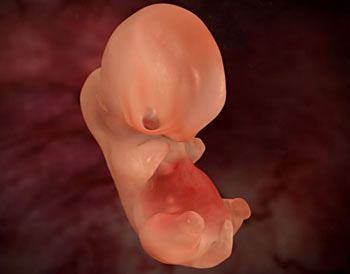
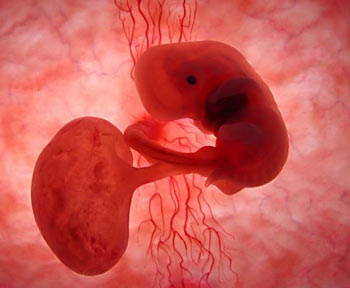


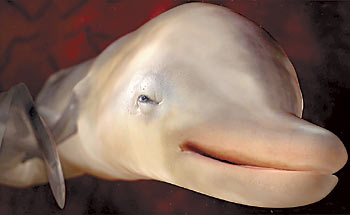
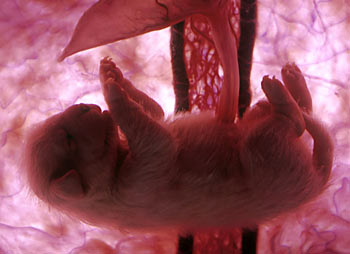


0 Comments:
Post a Comment
<< Home